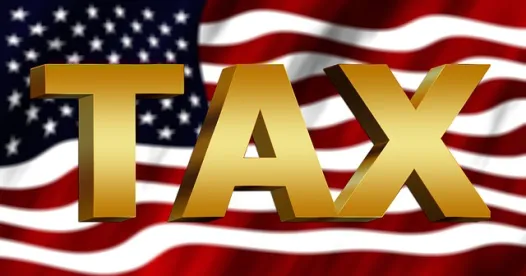The U.S. tax authorities have issued substantial guidance related to the phase-out of LIBOR – relevant to lenders, borrowers and parties to financial instruments of virtually every type.
In proposed regulations (“the Proposed Regulations”) released on October 9, 2019, the Internal Revenue Service (“IRS”) and the U.S. Department of the Treasury (the “Treasury”) addressed market concerns regarding the U.S. tax effect of the expected transition from LIBOR and other interbank offered rates (“IBORs”) on debt instruments (e.g., loans, notes and bonds) and non-debt contracts (e.g., swaps and other derivatives). The key tax concern to date has been whether the replacement of an IBOR-reference rate in a debt instrument or non-debt contract with a different reference rate would result in a taxable exchange of the debt instrument or contract, potentially triggering a current U.S. tax liability to one or more of the parties.
The core of the Proposed Regulations provide some comfort – they detail the requirements for the rate replacement to not result in a taxable event (either in respect of the instrument itself or to certain integrated hedging transactions). The Proposed Regulations also contain transition guidance on other matters potentially impacted by the rate change, such as maintenance of REMIC status and the calculation of interest expense of a foreign bank with a U.S. branch.
While the Proposed Regulations are broadly taxpayer favorable – and indeed draw heavily on input from the Alternative Reference Rates Committee (“ARRC”),[1] which was charged with facilitating voluntary acceptance of alternative reference rates, as well as comments from other industry groups – their scope is limited enough that affected taxpayers should take care to ensure that amendments to their loans and other financial instruments are tailored to conform to the Proposed Regulations. In particular, in order to avoid a taxable event, affected taxpayers substituting an IBOR-referencing rate for a new rate, such as SOFR, will need to satisfy several tests, including a test of whether the fair market value of the affected loan or financial instrument is substantially equivalent both before and after the rate is changed, taking into account any lump-sum payment made.
Taxpayers may generally rely on the Proposed Regulations until final regulations are published, provided that the rules are applied consistently by taxpayers and their related parties. Read the rest of this post for background on the LIBOR transition, and a more complete description of the Proposed Regulations. Please contact any of the authors listed above or your usual Proskauer contact to discuss any aspect of the Proposed Regulations applicable to your specific circumstances.
Background on LIBOR Transition
The use of LIBOR reference rates for debt instruments and other financial products is globally systemic, and the size of the principal amount of financial products referencing LIBOR is profound. In mid-2018, roughly $200 trillion of financial products referencing USD LIBOR alone were estimated to exist in the financial markets – and LIBOR benchmarks are calculated for four other currencies (British sterling, Swiss francs, Japanese yen and euros).
In response to the 2014 recommendation by the Financial Stability Board, the U.S. Federal Reserve Board and the New York Federal Reserve Bank convened the ARRC, which identified the Secured Overnight Financing Rate (“SOFR”) as the successor to USD LIBOR rate that represents best practice for use in certain new USD derivatives and other financial contracts. Similar working groups were established by the Bank of England, the European Central Bank, the Bank of Japan and the Swiss Central Bank, among others. The UK authorities have stated they will cease pushing banks to participate in LIBOR panels after the end of 2021. As a result, LIBOR (and potentially other IBOR-referencing rates as well) may be permanently discontinued as of 2021, or may deteriorate to the extent that their reliability and relevance becomes impaired.
This set of circumstances suggests the strong likelihood of a voluntary transition away from USD LIBOR (as well as similar transitions from other IBORs to new benchmarks). The Preamble states that this transition will likely happen in the market through an amendment by the parties to each affected loan and other financial instrument, replacing LIBOR (or other IBOR) with a new reference rate — for example, a SOFR-referencing rate — or another fallback rate. The Preamble notes that newer debt instruments and derivatives may already include fallback rates and mechanics for changing the rates in anticipation of the need to replace LIBOR at some point.
However the transition happens, the Preamble cites the ARRC’s expectation that amendments to financial instruments may include (i) adjustments to the spread above the base reference rate, to account for the expected difference between the two base reference rates or (ii) a one-time lump sum payment in lieu of all or part of a spread adjustment.
Absent the Proposed Regulations, any financial instrument amended in the ways described above, along with an actual change from an IBOR-referencing rate to a new reference rate or fallback rate, must be analyzed for U.S. federal income tax purposes under a variety of rules which could affect both lenders and borrowers under a debt instrument, and either or both counterparties to a derivative or other financial instrument. Indeed, the Preamble states that in the absence of guidance, the vast majority of expected changes to USD LIBOR–linked financial products could lead to the recognition of gains or losses in these contracts for U.S. federal income tax purposes.
The Proposed Regulations
Debt Instruments. Whether a change to the terms of a debt instrument results in a taxable exchange for U.S. federal income tax purposes is generally determined under the rules of Treas. Regs. Section 1.1001-3 (sometimes called the Cottage Savings regulations, after the Supreme Court decisions that prompted their issuance).[2] Under the Cottage Savings regulations, a change to any term of a debt instrument is evaluated to determine whether it is a modification[3] and, if it is, whether that modification is a “significant modification.”[4] Although under certain circumstances, an alteration to a debt instrument resulting from the operation of the terms of the debt instrument are not a modification, virtually all alterations resulting from an agreement between the borrower and the lender are modifications.[5] For most debt instruments, a modification that results in a change in yield that exceeds the greater of 25 basis points (1/4 of one percent) or .05 times the annual yield of the unmodified debt instrument (i.e., 5% of the unmodified yield) results in a significant modification, and thus a taxable exchange of the old (unmodified) debt instrument for a new (modified) debt instrument.[6] Other modifications to debt instruments that do not relate to the yield, timing of payments, obligor or security, or nature (debt versus equity, or recourse versus nonrecourse) of the debt are evaluated for whether they are “economically significant” under all the facts and circumstances.[7]
As a result, absent the Proposed Regulations, the Cottage Savings regulations would mean that changing the reference rate for determining the interest on a debt instrument from an IBOR-reference (such as USD LIBOR) to a new reference rate or a fallback rate generally would result in a taxable exchange unless the change met one of the limited exceptions to treatment as a modification, or the resulting change of yield (up or down) was within the limits of the 5% of unmodified yield or 25 basis points test. Additionally, any related changes to the debt instrument to effect the change in reference rate that do not affect the yield would have to be evaluated for their economic significance under all the facts and circumstances.
The Proposed Regulations expressly override this result where an alteration in the terms of a debt instrument replaces a rate referencing an IBOR with a “qualified rate,” by not treating such an alteration (and any “associated alteration”) as a modification, and therefore not an exchange under the Cottage Savings regulations.[8]
The Proposed Regulations create a three-prong test to determine if a rate is a “qualified rate:”
-
The rate either must be one of eight specifically enumerated rates or fall into one of four other rate categories (the “Rate Test”):[9]
-
Secured Overnight Financing Rate published by the Federal Reserve Bank of New York (“SOFR”), Sterling Overnight Index Average (“SONIA”), Tokyo Overnight Average Rate (“TONAR / TONA”), Swiss Average Rate Overnight (“SARON”), Canadian Overnight Repo Rate (“CORRA”), Hong Kong Dollar Overnight Index (“HONIA”), the interbank overnight cash rate of the Reserve Bank of Australia (“RBA Cash Rate”) and the euro short-term rate administered by the European Central Bank (“€STR”) (the “Per Se Qualified Rates”);[10]
-
Any alternative, substitute or successor rate selected, endorsed or recommended by the central bank or monetary authority (or similar institution or working group/committee thereof) as a replacement for an IBOR or its local currency equivalent in that jurisdiction (together with the Per Se Qualified Rates, the “Central Bank Qualified Rates”);[11]
-
Any other “qualified floating rate” as defined in the existing Treasury Regulations relating to variable rate debt instrument rules (“VRDI”),[12] without regard to the limitation on multiples, that is not a Central Bank Qualified Rate (a “VRDI Rate”);[13]
-
Any rate determined by reference to a Central Bank Qualified Rate or a VRDI Rate, including by adding or subtracting basis points to the rate or by multiplying the rate by a specified number;[14] or
-
Any rate published as a “qualified rate” in the Internal Revenue Bulletin.[15]
-
-
The fair market value of the debt instrument after the replacement of the IBOR-referencing rate must be substantially equivalent to the fair market value of the debt instrument before the replacement of the IBOR-referencing rate (the “FMV Test”);[16] and
-
The new reference rate effectively must be benchmarked to transactions in the same currency as the currency benchmark for the replaced IBOR-referencing rate (the “Reference Currency Test”).[17]
The inclusion of VRDI Rates in the scope of the Rate Test greatly expands the range of acceptable replacement rates, and means that for most debt instruments, substantial equivalence requirement under the FMV Test likely will be dispositive for establishing whether a replacement rate is a qualified rate.
The Proposed Regulations do not define “substantial equivalence” for purposes of the Rate Test.[18] However, the Proposed Regulations provide two safe harbors, either of which, if satisfied, is deemed sufficient to satisfy the Rate Test. The determination of whether the Rate Test is satisfied under either safe harbor or the general substantial equivalence standard must take into account the value of any one-time lump-sum payment made in connection with the change in reference rate.[19]
The first safe harbor (the “Rate Comparison Safe Harbor”) is satisfied if, on the date of the change in reference rate, the “historic average” of the relevant IBOR-referencing rate does not differ by more than 25 basis points from the historic average of the replacement rate; the historic average may be determined using an industry-wide standard for rates referencing debt instruments, such as a method recommended by the ARRC.[20] While the Rate Comparison Safe Harbor contemplates the possibility of the parties determining the comparison other than by use of an industry-wide standard, the requirements of such method are onerous, and include a subjective test of the “good faith” of the parties to make the fair market values substantially equivalent.[21] It is not clear whether the Rate Comparison Safe Harbor will thus be effectively mandatory in absence of special circumstances – that is, if an industry-wide standard yields a less than 25 basis point difference when applied to the modification, query whether the IRS would accept any other conclusion.
The second safe harbor (the “Arm’s-Length Safe Harbor”) is satisfied if the borrower and lender are not “related” and they determine the fair market value of the debt instrument before and after the change in the reference rate is substantially equivalent based on bona fide, arms’ length negotiations;[22] no specific guidance is given as to how to establish this factually.
The Proposed Regulations also provide that no deemed exchange of a debt instrument results from “associated alterations,” generally defined as alterations that are both associated with and reasonable necessary to adopt the new reference rate.[23] The Proposed Regulations provide that an associated alteration may include a technical, operational or administrative change, such as a change to the definition of interest period and frequency of determining rates or making payments of interest, and give as an example, delaying payment dates on a debt instrument by two days to allow time to compute and pay interest at a qualified rate in arrears.[24] An associated alteration also includes an obligation to make a one-time payment to offset a change in value to the debt instrument (which, as discussed above, must also be accounted for under the FMV Test).[25]
Non-Debt Financial Instruments. Non-debt financial instruments, which the Preamble states includes derivatives, stock,[26] insurance contracts and lease agreements, are not subject to the Cottage Savings regulations. Instead, such non-debt financial instruments are subject to the general rule that provides that a taxable event occurs when property is exchanged for other property that differs materially in terms of kind or extent,[27] and there is very limited regulatory authority relating to deemed exchanges of non-debt financial instruments (primarily carving out limited exceptions to exchange relating to the launch of the euro and the effect on counterparties of certain transfers of derivatives contracts by dealers and clearinghouses)[28] or the potential knock-on effects on the timing, source or character of a payment that might result from a deemed exchange in such a situation.
The Proposed Regulations do not address this lack of guidance at a general level, but do provide that, where a modification in the terms of a non-debt financial instrument are modified to replace (or to provide as a fallback to) an IBOR-referencing rate with a qualified rate, such modification will not result in a taxable event.[29] The standard for determining whether a replacement rate is a qualified rate is generally the same for a non-debt financial instrument as it is for a debt instrument – i.e., the replacement rate must satisfy the Rate Test, the FMV Test and the Reference Currency Test.
Effect of Contemporaneous Changes. The Proposed Regulations generally provide that if a financial instrument (whether debt or non-debt) is altered or modified to provide a replacement or fallback reference rate for an IBOR-referenced rate, and contemporaneous additional alterations or modifications are made to the financial instrument that are not “associated alterations,” or “associated modifications” in the case of a non-debt contract, then those additional alterations are tested under the existing general rules (the Cottage Savings regulations for debt instruments, and the “property differing materially in kind or extent” rule for non-debt instruments) to determine whether a taxable exchange results.[30]
The Proposed Regulations provide as an ordering rule that the change providing the replacement qualified rate (along with any associated alterations or modifications) is deemed to occur first, followed immediately by the other additional alterations or modifications.[31] As a result, if such additional alterations or modifications result in taxable exchanges, any income, gain, loss or deduction would be determined based on an exchange of the financial instrument bearing the replacement qualified rate (and otherwise unaltered/unmodified) for the financial instrument reflecting the additional alterations or modifications. The Proposed Regulations specifically contemplate a situation where the interest rate on a debt instrument is changed from an IBOR-referencing rate to a qualified rate, and the spread is adjusted to reflect a deterioration in the borrower’s credit, concluding that only the change in the spread relating to the change in risk premium is analyzed under the Cottage Savings regulations.[32]
Integrated Transactions and Hedges. Both the OID rules and the nonfunctional currency rules provide that, if certain criteria are met, a taxpayer can integrate a debt instrument and a hedging transaction into a single synthetic fixed-rate debt instrument[33] (or, in the case of a currency hedge, a synthetic debt instrument denominated in the taxpayer’s functional currency).[34] Under the Proposed Regulations, a taxpayer may alter or modify the terms of either leg (the debt instrument or the derivative) of an integrated transaction to replace a rate referencing an IBOR with a qualified rate without being treated as “legging out” of the integrated transaction, as long as the requirements for integration are otherwise maintained.[35]
The Proposed Regulations provide a similar result under the hedge accounting rules[36] to avoid a disposition or termination on either leg of the hedge as a result of a change to a qualified rate, as well as under the arbitrage investment restrictions applicable to tax-exempt and tax-advantaged bonds[37] in respect of a change to a qualified rate for an interest rate hedge integrated with an issue of tax-exempt bonds if the other requirements for such integration are maintained.[38]
Source and Character of One-Time Payment. The Proposed Regulations provide that, for all purposes of the Code, the source and character of a one-time payment that is made by a payor in connection with an alteration or modification of a financial instrument (debt or non-debt) to provide a qualified rate or associated alteration or modification will be the same as the source and character for U.S. federal income tax purposes that would otherwise apply to a payment made by the payor with respect to the altered debt instrument or modified non-debt contract.[39]
Grandfathered Debt Instruments and Non-Debt Contracts. The Preamble states that certain obligations that are “grandfathered” for purposes of the FATCA, registered-form obligation and dividend-equivalent rules which might otherwise be treated as losing the benefit of such “grandfathered” status as a result of a change to a qualified rate from an IBOR- referencing rate, will not be treated as reissued under the Proposed Regulations. The Proposed Regulations provide a specific reference to the grandfathering provisions of the FATCA regulations,[40] but do not specifically address the registered-form obligation rules or the dividend-equivalent rules.
Special Rule for Variable Rate Debt Instruments. Special rules are provided under the Proposed Regulations for determining the amount and accrual of OID in the case of a VRDI that provides both for interest at an IBOR-referencing qualified floating rate and for a fallback rate that is triggered when the IBOR becomes unreliable or unavailable.[41] Furthermore, the Proposed Regulations treat the possibility of the IBOR-referencing rate becoming unavailable or unreliable as a remote contingency under the VRDI rules, and do not treat an activation of the fallback rate as a change in circumstances, each of which avoids a VRDI from otherwise being treated as retired and reissued.[42]
REMICs. In general, in order to meet the requirements of Section 860G, a REMIC’s regular interest must have fixed terms on the startup day of the REMIC.[43] Under the Proposed Regulations, a replacement of an IBOR-referencing rate with a qualified rate, or the inclusion of a qualified rate as a fallback, after the startup day will not cause the REMIC to have an impermissible contingency that would cause it to fail to meet the REMIC regular interest requirements, as long as both the IBOR-referencing rate and the qualified rate are otherwise rates permitted under Section 860G.[44] Additionally, the payment of reasonable associated costs will not disqualify the REMIC regular interest from so qualifying (or subject a non-REMIC payor of such costs to the tax imposed under Section 860G(d).[45]
Branch Interest Expense of Foreign Banks. For purposes of computing the branch interest expense allocable to effectively connected income of the U.S. branch of a foreign bank, current regulations provide for an election to use a rate referencing 30-day LIBOR (exclusively) instead of determining its average U.S.-dollar borrowing cost.[46] The Proposed Regulations allow a taxpayer to use the yearly average SOFR instead of the published average 30-day LIBOR, and to change the rate used between the two from year to year without the consent of the IRS.[47] However, the Preamble acknowledges that the SOFR does not reflect credit risk and is likely to be lower than a rate referencing 30-day LIBOR, and thus could negatively impact this calculation for a foreign bank. The Preamble seeks comments on whether a different nearly risk-free rate would be a more appropriate substitute for the purposes of this election.
# # #
ENDNOTES
[1] The ARRC is a group of private-market participants convened to help ensure a successful transition from U.S. dollar (“USD”) LIBOR to its recommended alternative, the Secured Overnight Financing Rate (“SOFR”). The ARRC is comprised of a diverse set of affected private-sector entities and a wide array of official-sector entities, including banking and financial sector regulators, as ex-officio members. See https://www.newyorkfed.org/arrc, last visited October 13, 2019. Factual data about the use of USD LIBOR and other IBORs comes from the ARCC website, which includes data references derived from a variety of other sources.
[2] Cottage Sav. Ass’n v. Commissioner, 499 U.S. 554 (1991).
[3] Treas. Reg. Section 1.1001-3(c).
[4] Treas. Reg. Section 1.1001-3(e). If a significant modification occurs, the Cottage Savings regulations provide that a debt instrument is deemed exchanged for property differing materially in kind or extent, which is the standard for determining whether a taxable exchange of property has occurred more generally. See Treas. Reg. Sec. 1.1001-3(a), referencing Treas. Reg. Sec. 1.1001-1(a) (discussed further below).
[5] See Treas. Reg. Section 1.1001-3(c)(ii).
[6] See Treas. Reg. Section 1.1001-3(e)(2)(ii). Although the Regulations state that the general facts and circumstances test (see fn 7 and the accompanying text) and not this objective yield test applies to contingent payment debt instruments (“CPDIs,” see generally Treas. Reg. Section 1.1275-4), the IRS has ruled privately that where a modification to a CPDI effectively changes the yield, the objective yield test may be used to establish the economic significance of the facts and circumstances of such a modification. See Priv. Lett. Rul. 201431003 (Jan. 28, 2014).
[7] See Treas. Reg. Section 1.1001-3(e)(1).
[8] Prop. Treas. Reg. Section 1.1001-6(a)(1).
[9] Prop. Treas. Reg. Section 1.1001-6(b)(1)(i).
[10] Prop. Treas. Reg. Sections 1.1001-6(b)(1)(i)-(viii).
[11] Prop. Treas. Reg. Section 1.1001-6(b)(1)(ix).
[12] See Treas. Regs. Sec. 1.1275-5.
[13] Prop. Treas. Reg. Section 1.1001-6(b)(1)(x).
[14] Prop. Treas. Reg. Section 1.1001-6(b)(1)(xi).
[15] Prop. Treas. Reg. Section 1.1001-6(b)(1)(xii).
[16] Prop. Treas. Reg. Section 1.1001-6(b)(2).
[17] Prop. Treas. Reg. Section 1.1001-6(b)(3).
[18] The Proposed Regulations provide only that for determining fair market value, any reasonable and consistently applied method may be used. Such method must take into account the value of any one time lump sum payment, and the method may (but need not) be based in whole or in part on past or projected values of the relevant rate. This only addresses the method of determining fair market value, however, and not the substantial equivalence of the unmodified FMV with the modified FMV. Prop. Treas. Reg. Section 1.1001-6(b)(2)(i).
[19] See Prop. Treas. Reg. Sections 1.1001-6(b)(2)(i), (ii), and (iii).
[20] Prop. Treas. Reg. Section 1.1001-6(b)(2)(ii). For a referencing rate on a derivative, the Proposed Regulations method specifically refers to the possibility of a method recommended by the International Swaps and Derivatives Association for purposes of computing a spread adjustment; see the discussion of non-debt instruments, below.
[21] See Prop. Treas. Reg. 1.1001-6(b)(2)(ii), last two sentences.
[22] Prop. Treas. Reg. Section 1.1001-6(b)(3). Whether parties are “related” for this purpose is determined applying the tests of Sections 267(b) and 707(b)(1).
[23] Prop. Treas. Reg. Section 1.1001-6(a)(5).
[24] Prop. Treas. Reg. Section 1.1001-6(c)(5), second sentence.
[25] Prop. Treas. Reg. Section 1.1001-6(a)(5), last sentence.
[26] The reason for inclusion of stock in the scope of non-debt financial instruments is uncertain, since a modification of the terms of stock generally would qualify for treatment as a “recapitalization” – and thus generally governed in the first instance by Subchapter C and not the default rules of Treas. Regs. Sec. 1.1001(a)-1. See Sections 354 (especially Section 354(a)(2)(C)), 356, 361 and 368(a)(1)(E).
[27] Treas. Regs Section 1.1001-1(a).
[28] See Treas. Reg. Sections 1.1001-4, -5.
[29] For the purposes of this discussion, references to an “alteration” generally refer to an alteration of the terms of a debt instrument and references to a “modification” generally refer to a modification of the terms of a non-debt contract, both as described under Prop. Treas. Reg. Sections 1.1001-6(a)(1), (2) and (3).
[30] Prop. Treas. Reg. Section 1.1001-6(a)(4).
[31] Prop. Treas. Reg. Section 1.1001-6(a)(4).
[32] The Proposed Regulations do not discuss how to differentiate spread changes that are permitted under the Rate Test for qualified rate purposes and spread changes resulting from changes in risk premium.
[33] Treas. Reg. Section 1.1275-6.
[34] Treas. Reg. Section 1.988-5(a).
[35] Prop. Treas. Reg. Section 1.1001-6(c).
[36] Treas. Reg. Section 1.446-4.
[37] Treas. Reg. Section 1.148-4(h).
[38] Prop. Treas. Reg. Section 1.1001-6(d).
[39] Prop. Treas. Reg. Section 1.1001-6(d).
[40] Prop. Treas. Regs. Section 1.1001-6(e).
[41] See Prop. Treas. Reg. Sections 1.1001-6(f); 1.1275-2(m).
[42] Prop. Treas. Reg. Sections 1.1275-2(m)(3), (4).
[43] Section 860G(a)(1).
[44] Prop. Treas. Reg. Sections 1.860G-1(e)(2)-(3).
[45] Prop. Treas. Reg. Section 1.860G-1(e)(4).
[46] Treas. Reg. Section 1.882-5(d)(5)(ii)(B).
[47] Prop. Treas. Reg. Section 1.882-5(d)(5)(ii)(B).






 />i
/>i
